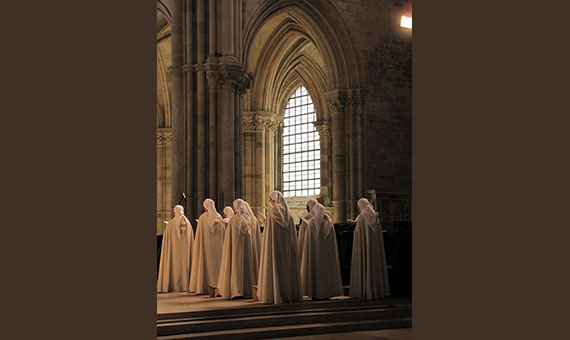Azadi ka Amrit Mahotsav Kolkata event honours four Clergymen
Pope Francis asks businesses to support working women: They’re ‘afraid to get pregnant’
Study: Christianity may lose majority, plurality status in U.S. by 2070
Indian politician declines Magsaysay Award under party pressure
Like John Paul II, Pope Francis heads to Kazakhstan during time of war

The conciliar movement, based on the theory that supreme authority in the church lies with a general council culminated in the 15th century, but the foundations of it were laid in the early years of the 13th century when canonists found difficulty in reconciling the increasing claims of papal authority with the theoretical possibility of a heretical Pope. Hugh of Pisa (d. 1210), a renowned medieval canon lawyer, among whose pupils was the famous future Pope Innocent III, for instance, taught that a heretical Pope could err, and sought to maintain the inerrancy of the church by distinguishing between the local Roman Church and the Catholic Church as a whole. In the following century, with the further growth of papal power, the movement gained increasing support and its principles were invoked in the dispute between Philip IV of France and Pope Boniface VIII. The Dominican, John of Paris (d. 1306), a professor at the University of Paris, was an important advocate of the theory and taught in his treatise, De Potestate Regia et Papali (1302) that the Pope was the steward of God in matters spiritual and temporal; as such he could be deposed for injustice by those who had elected him, who had themselves acted as representatives of the whole Christian people. Marsilius of Padua, the Italian scholar, in his famous treatise, Defensor Pacis (1324) maintained the supremacy of the state in all matters, spiritual as well as temporal. William of Ockham in his conflict with the papacy attacked the indefectibility both of the Pope and the general council and maintained that truth in church could be found even in a single member of the church.
The outbreak of the Great Schism in the West in 1378 raised the question of the supreme authority of the Pope in an acute form. In 1380 Conrad of Gelnhausen, the German canon lawyer and theologian advocated the summoning of a general council, arguing that the absence of a single recognized Pope left the duty of convoking it to the cardinals. That was the motivating force behind the council of Pisa in 1409 which, however, did not succeed in ending the schism, but, in fact, worsened the situation by creating three Popes instead of two. The council of Constance (1414-1418) was the high point of the conciliar movement and saw the passing of the decree, Haec Sancta which declared that any Christian, including the Pope, was bound by the decisions of a council which derived its authority directly from God and also decreed that the Popes are bound to call general councils at regular intervals. It was natural that the Popes were not inclined to ceding their powers to councils. So for example, Pope Eugene IV showed himself openly hostile to the council of Basel which followed the council of Constance in 1431. No further general council was called until Lateran V in the early 15th century. In 1460 Pope Pius II who before becoming Pope had been an exponent of the conciliar theory promulgated the bull Execrabilis, formally forbidding the appeal from a Pope to a council. Although Nicholas of Cusa, the influential German theologian, in his work De Concordantia Catholica pleaded for a balanced scheme of consent and collaboration for the reform of the church, the conciliar movement could not survive in the church. This failure of the conciliar theory to win general acceptance after the 15th century may be taken as one of the factors leading to the Reformation and to the emergence of movements like Gallicanism, Febronianism, etc. which challenged papal supremacy in the following centuries. Even as the Reformation raged, Luther and Emperor Charles V appealed to the Pope for a council but to no avail. The final rejection of the conciliar movement came at Vatican I which cemented papal power through the two dogmas of papal primacy and infallibility. Fortunately, the Second Vatican Council has once again emphasized the corporate authority of the episcopate though not over against the papacy and placed an ecumenical council which meets with the Pope and the world wide episcopate as the highest authority in the church. Moreover, the Synod of bishops, a specific institution of Vatican II, concretely manifests the importance of consultation and consensus in the church, both indirect influences of the conciliar movement.
Isaac Padinjarekuttu
(Professor of Church History
at Oriens Theological College, Shillong)
Leave a Comment